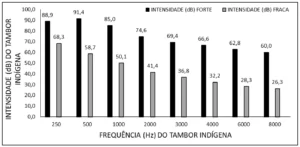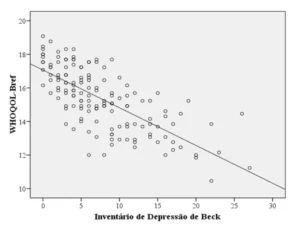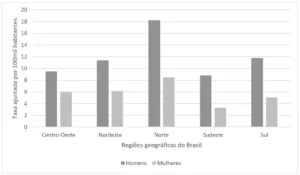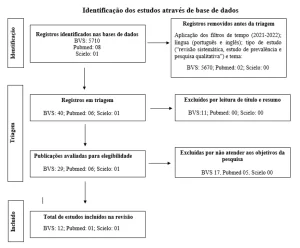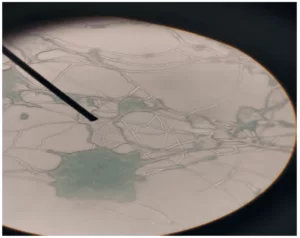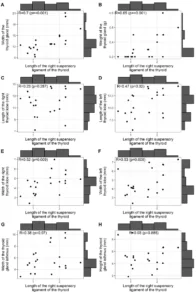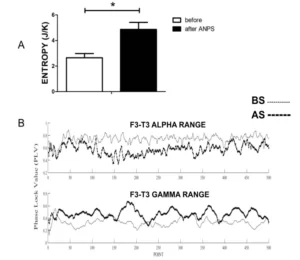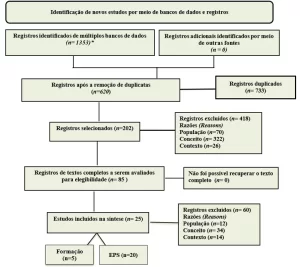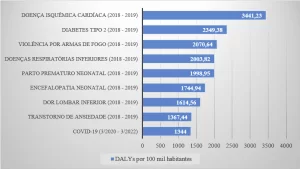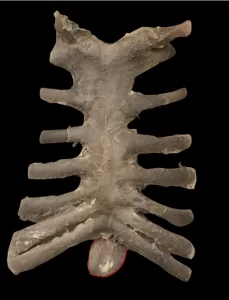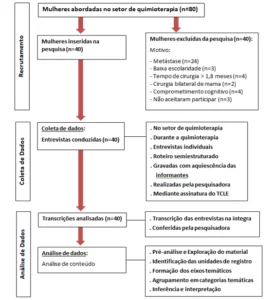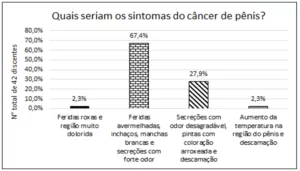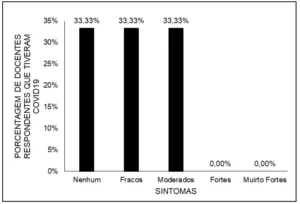REVIEW ARTICLE
SOUSA, Taynara Ribeiro de [1], ROCHA, Rafaeli [2], LOPES, Francícero Rocha [3]
SOUSA, Taynara Ribeiro de. ROCHA, Rafaeli. LOPES, Francícero Rocha. Mesotherapy in the treatment of localized fat: literature review. Revista Científica Multidisciplinar Núcleo do Conhecimento. Year. 06, Ed. 11, Vol. 05, pp. 183-199. November 2021. ISSN: 2448-0959, Access link: https://www.nucleodoconhecimento.com.br/health/mesotherapy
ABSTRACT
Mesotherapy, evidenced as a set of techniques for people’s pain comfort and general well-being, is constituted as a cluster of procedures with the most diversified purposes, among which we mention the relief of pain and stress. For aesthetic purposes, it has been widespread, as it helps to fight cellulite and localized fat, considering that exercises contribute to the stimulation of blood and lymphatic flow, in the dissemination of local physiology and in the excretion of toxins, which impair the development of the body. In this context, this article aims to answer: does mesotherapy actually bring benefits for the reduction of localized fat? Objective: To analyze the use of mesotherapy in the treatment of localized fat. Methodology: refers to a literature review, carried out in scientific articles, legislation, online journals and other official documents that prove the benefits of mesotherapy in the field of aesthetics/health. The articles were analyzed and related, according to the study design. A summary form was used, which includes: the identification of the authors, year and platform of publication, area of knowledge and summary of the article. Results: The selected texts show that despite the widespread use of mesotherapy for the reduction of localized fat, studies still need to advance so that there is actually scientific evidence to legitimize this practice. Conclusion: The study provided extensive knowledge about the procedures adopted, highlighting the advantages and disadvantages of performing mesotherapy for health, especially with regard to professional knowledge for the safe development of the technique used.
Keywords: Body, Localized Fat, Mesotherapy, Treatment.
INTRODUCTION
The beauty standard established by society, added to the large number of obese people in Brazil and in the world, has demonstrated displeasure with body image, causing restlessness and discomfort with the body (KAKESHITA, 2006).
However, this cannot be observed in its entirety, from a negative perspective, considering that there are people who are adept at aesthetic procedures, physical exercises and eat healthily.
From this point of view of body “imperfections”, localized fat appears to be one of the main complaints of aesthetic alteration that is currently observed, these are associated with a high risk of cardiovascular diseases, in addition to the tendency to develop diseases such as metabolic syndrome and diabetes, which may compromise the life expectancy of affected people (BRESCIA et al., 2009).
Information collected at Harvard Medical School and published by BBC NEWS describes that, in most people, 90% of body fat is subcutaneous, located under the skin. The remaining 10%, considered visceral or intra-abdominal, are “camouflaged” well out of our reach, under the abdominal wall, located in the spaces that circulate the liver, intestines and other organs. This is observed when touching the belly, this soft fat is also subcutaneous (BARRA, 2018).
In this context, and realizing the revolutionary process of aesthetic procedures, we are faced with mesotherapy, which helps in the care of localized fat, which causes so much dissatisfaction due to the accumulation of adipose tissue in various parts of the body: abdomen, thighs and buttocks. Tacani et al. (2009) point out that 84.3% of women are the ones who most seek these treatments. In 78.2% of obese patients, hormonal and weight changes lead to weight gain, volume and changes in body contour, as indicated by studies that define the profile of patients treated at dermato-functional physiotherapy clinics.
In general terms, it is evident that people are never satisfied with their body, considering that most of them want to change something in it, with excess fat presented as the main problem, that is, localized lipodystrophy, the so-called localized fat (TOGNI , 2006).
Faced with this reality, it is understood that localized fat causes damage to health and has negative repercussions, especially for women, who follow a socially constituted standard of beauty. Thus, the question that arises is: does mesotherapy actually bring benefits for the reduction of localized fat?
For this questioning, the following hypothesis was listed: the scientific evidence is small, considering that there are few studies that objectively and quantitatively evaluate the effects of mesotherapy techniques for the reduction of adipose tissue.
In view of this, the study has the general objective of analyzing the use of mesotherapy in the treatment of localized fat, to follow this path the specific objectives were structured, namely: to investigate all the nuances involving mesotherapy and to identify the effects of mesotherapy for fat reduction location and consequently of body measurements.
Thus, the present study is justified by the relevance of the topic, considering that it seeks confirmation that mesotherapy in the treatment of localized fat, when performed with the correct technique, can help to reduce measurements and edema, in addition to stimulating circulation blood flow, metabolism and neuromuscular responses, combines body designs and reduces anxiety and depression, cooperating to raise self-esteem and improve people’s quality of life.
The study is based on a descriptive and exploratory literature review. According to Prodanov (2013. p. 54), the purpose of the bibliographic review study is to put the researcher in direct contact with published materials on the subject, such as books and scientific articles found in conventional and virtual libraries (PRODANOV, 2013).
The descriptive study admits that the researcher observes, registers, analyzes, classifies and interprets the facts, without the same intervening on them, that is, the phenomena of the physical and human world are studied, but are not manipulated by the researcher (PRODANOV, 2013).
Exploratory research, in turn, allows the researcher to study the topic from different dimensions and perspectives, providing greater knowledge about the subject to be investigated, in order to facilitate the research design, guide the definition of its objectives and allow the formulation of hypotheses or the discovery of a new panorama on the subject.
In the bibliographic classification, publications indexed in the database Scientific Electronic Library Online (Scielo), Google Scholar and other electronic sites that address mesotherapy in the treatment of localized fat were searched. In this process, seven publications were chosen, obeying the criteria listed below: search in the databases, using the descriptors: Body; Localized fat; Mesotherapy and Treatment; full publications, articles published in Portuguese, articles of national origin that were published and indexed in databases in the period between 2006 and 2021. Articles published in a foreign language, articles that are not related to the topic in question were excluded from this proposal study and articles prior to the year 2006.
Tacani (2008, p. 17) states that the action of local intradermal application, through multiple injections in the adipose tissue, is still an extremely controversial subject. Some authors believe that there is no primary lipolytic effect on the adipose tissue, others refer to a primary lipolytic effect, justifying that mesotherapy has a local mechanical result resulting from the direct act of pressure performed on the administered segment. However, others report a secondary lipolytic effect when accompanied by diet and physical activity.
The collection of articles in the databases was carried out from January to June 2021 and the texts found and selected are of fundamental importance, highlighting what the researched literati debate about mesotherapy in the treatment of localized fat. The field of aesthetics lights up in a vertiginous way and is linked to the well-being of individuals, requiring more information since technical and scientific competence is present in the set of improvement of aesthetic methods and people’s well-being (BRASIL, 2018).
DEVELOPMENT
Body imbalances caused by excess weight affect a major public health problem, causing, in addition to image discomfort, high financial and social costs, risk for the appearance of Chronic Noncommunicable Diseases (NCDs), such as Cerebral Vascular Accident – CVA, Hypertension, diabetes, heart disease and some types of cancer, constituting a global adversity (OPAS, 2016).
In this context, the influence of adiposity in the abdominal region is most often related to glucose resistance, changes in the plasma lipid profile and arterial hypertension. The correlation of these cardiovascular risk factors (hyperinsulimia, arterial hypertension, type 2 diabetes, low HDL-cholesterol) results in plurimetabolic syndrome (LIMA et al., 2006).
It should be noted that localized fat, defined as a cellular disorder in the metabolism of adipocytes or in their abnormal development, occurs predominantly in the main regions of the body, of which we highlight the hips, abdomen, thighs and oblique. Its constitution is related to factors such as abundance, location of fat cells in the body, age, gender, type of diet, sedentary lifestyle and even genetic factors (MACHADO et al., 2017).
The hypodermis, also known as the adipose tissue or the deepest layer of the skin, is where the layers of adipose tissue are housed, which consists of supporting this tissue, its function is to store energy through triglycerides, transform and expel protein groups and not proteins, retain mechanical shocks, functioning as an insulator and in temperature balance, in addition to assisting in the balance and fixation of organs (METAB, 2006 apud OLIVEIRA, 2016).
In children, it has a similar consistency, and in adults, it changes according to the region. In males, it is thicker at the nape of the neck, which is located close to the seventh cervical vertebra, covering the deltoid region and the triceps, lumbosacral region and buttocks. In females, it appears mainly in the breasts, buttocks, epitrochanteric region and anterior thigh (BORGES, 2010).
The fatty tissue located in the abdomen is the main complaint of both women and men, who use methods that involve partial or total abstinence from food and physical activities in order to reduce measures, however, in certain regions where there is too much adipose tissue, these procedures do not have satisfactory effects, which makes them resort to aesthetic procedures (MACHADO et al., 2017).
Brescia (2009, p. 5) describes that adipose tissue is classified into: white adipose tissue with yellow characteristics, common or unilocular and brown adipose tissue with brown or multilocular characteristics, in which they differ by quantity, color, vascularization , number of organelles, metabolic activity and distribution in the organism, that is, it presents morphological distribution and differentiated functions.
This mechanism works as the body’s important energy deposit and, for this source of energy to be available, lipolysis must occur.
A quebra da célula de gordura ocorre com a ativação da lípase hormônio, que é sensível às catecolaminas, mediante a estimulação de receptores β- adrenérgicos, levando à quebra das moléculas de triglicerol e a liberação de ácidos graxos livres e glicerol dos adipócitos (BORGES, 2006).
Studies prove that some active principles that are used in order to reduce localized liposity still deserve to be deepened, to prove their action, since they may not have significant effects with scientific evidence for the reduction of localized fat and consequently reduction of measures, discouraging the client to carry out the correct and indicated protocol to solve the problem (COSTA, 2012).
Mesotherapy has been widespread as one of the techniques for reducing adipose tissue. This technique, also known as intradermotherapy, is conceptualized as a minimally invasive technique that consists of local intradermal enzyme therapy through multiple injections, is used to aid in the absorption of fats, also acting in the reduction of hair loss (ALVES, 2017).
Mesotherapy was developed in 1952 by French physician Dr. Michel Pistor for the treatment of pain and vascular disorders. Pistor started out injecting procaine intravenously to treat an asthmatic. He found that although the original condition did not improve, the patient’s hearing did improve. With the intention of reinforcing the effect, Pistor injected small doses of procaine 3 to 5 mm deep into the patient’s ear. Since then, dozens of deaf patients have come to Pistor for treatment (SIVAGNANAM, 2010).
Although its discoverer did not use this procedure to reduce body fat, this technique has been used to help shape the body, but it is not a treatment for obesity. What is observed regarding its use is that the best results are analyzed in individuals who are close to their desirable weight and who seek to remove small specific areas of body fat. An additional use of lipolytic mesotherapy is to administer it to areas of the body where fat is preferentially lost during a weight loss program (JAYASINGHE, 2013).
Furthermore, it is considered a low-cost technique, as it uses diluted doses of drugs. The technique of subcutaneous injections of phosphatidylcholine, combined with its emulsifier, deoxycholate, is effective in removing small portions of adipose tissue, due to the detergent action of deoxycholate, which promotes cell lysis. Thus, as mesotherapy is a considerably easier and less invasive technique, it attracts many people interested in the possible reduction or elimination of localized fat (ROTUNDA et al., 2005).
Contrary to this thought, Varela, 2018, highlights that the use of injectable products (mesotherapy or intradermotherapy), in which their methods are very variable, have the effectiveness of the treatment quite questionable, but in theory, the active ingredients act on the pathophysiology of localized fat with a perspective of improvement in the place applied.
Given these notes, it is understood that treatment with the technique of intradermotherapy (or mesotherapy), for the solution of localized fat, is a good option, as long as it takes into account fundamentals based on the physiology of the adipose tissue. However, it is clear that this type of treatment is not indicated for the reversal of obesity, because by setting the objective of reducing fat tissue, the aim is to reduce the accumulation of adipose cells in a given region and, therefore, contain measures only (ROTUNDA et al., 2005).
To promote better visibility on the mesotherapy procedure, a more specific analysis will be presented below, through the summary sheets of the selected articles. These constitute a fundamental procedure considering that they contain important information about the study. It is noteworthy that from this, the reader has the opportunity to understand the information that each article brings about the topic in question.
Summary sheet 1: Mesotherapy as a treatment for localized fat: a literature review
| Author(s) | Damasceno, Débora Gonçalves de Sousa. |
| Publication year | 2018 |
| Platform | Uniceub repository |
| Key words | Intradermotherapy, intradermal injections, sodium deoxycholate, phosphatidylcholine. |
| Knowledge area | Health and Aesthetics |
| Article summary
|
The article proposes to explain the notes presented by renowned authors on mesotherapy in the treatment of localized fat.
The author continues conceptualizing and explaining about: adipose tissue, adipocyte metabolism, lipogenic activity, uptake of fatty acids by adipocytes, lipolytic activity, mesotherapy, main active principles, phosphatidylcholine and sodium deoxycholate. The author concludes and goes on to state that mesotherapy is indicated as an alternative method for the treatment of localized fat, however it is essential that caloric moderation associated with the regular practice of physical exercises be included in the treatment so that the results are satisfactory. |
Source: Own authorship (2021).
The authors bring information about the standard of beauty established by society, highlighting the various procedures used by people to achieve body “perfection”. In this sense, the text allows contextualizing from the questioning that directs this study, since the authors defend the use of mesotherapy for the purpose of reducing localized fat, however it is necessary to combine the practice of physical exercises and caloric reduction (DAMASCENO, 2018).
Summary sheet 2: Intradermotherapy/mesotherapy for the treatment of localized fat: pharmaceutical emphasis
| Author(s) | Wappler, Patrícia Raquel |
| Publication year | 2020 |
| Platform | Unisc online |
| Key words | Intradermotherapy, mesotherapy, localized fat |
| Knowledge area | Saúde e Estética |
| Article summary
|
The work brings us information about the tissues, dysfunctions and use of intradermotherapy, as well as the ability and liberation of the practice for pharmaceutical professionals. It constitutes a literature review.
It emphasizes Resolution No. 616, of November 25, 2015, which deals with technical requirements for the professional practice of pharmacists in the field of aesthetic health, expanding the list of techniques and therapeutic resources used by these professionals. In conclusion, the author emphasizes that mesotherapy is a less invasive procedure and constitutes an alternative procedure for the treatment of localized fat in patients who aim to remove fat from specific areas of the body, therefore not being considered as a treatment for obesity. |
Source: Own authorship (2021).
Wappler (2010) describes how the use of Intradermotherapy began, which was initially used to treat pain and after observing how it behaved in the body, it started to be used as an aesthetic treatment. However, the researched authors defend greater depth regarding the studies that prove the effectiveness of this procedure, which meets the question proposed by the authors of this study, that is, does mesotherapy actually cause benefits for the reduction of localized fat?
Summary sheet 3: Intradermotherapy in the treatment of localized fat
| Author(s) | Severo. Vanessa Fuhr; Emanuelle Kerber Viera |
| Publication year | 2018 |
| Platform | Revista saúde integrada v. 11, n. 21 (2018) |
| Key words | Intradermoterapia. Gordura localizada. Substâncias lipolíticas. |
| Knowledge area | Saúde e Estética |
| Article summary
|
The text discusses the physiological effects, restrictions and contraindications of the main lipolytic, thermogenic and vasodilator cosmetic actives used for the treatment of localized fat, emphasizing that despite scientific advances in the scope of cosmetology, innovations are still restricted in terms of active principles.
In conclusion, the authors describe that for the treatment of localized fat, lipolytics help in lipolysis, as well as thermogenics that act on microcirculation together with vasodilators. They state that many cosmetics still deserve to be studied, considering that the mechanisms of action and physiological effects are not very clear, although they are commercialized without restrictions. |
Source: Own authorship (2021).
The search for a perfect body is no longer restricted to women, but also to men who express the desire to change their body aesthetics, requiring that the effectiveness of the aesthetic procedures used for this purpose be scientifically proven (SEVERO and VIEIRA, 2018).
The text that deals with Intradermotherapy in the treatment of localized fat, points out that even though the resources of Intradermotherapy associated with other treatments are available, their efficiency is not proven in a systematic way and the studies need to be continued in order to have a conclusion of this process of significantly and alluding to the context of localized fat reduction (SEVERO and VIEIRA, 2018).
Summary sheet 4: Mesotherapy: a bibliographic review
| Author(s) | Herreros. Fernanda Oliveira Camargo; Aparecida Machado de Moraes; Paulo Eduardo Neves Ferreira Velho |
| Publication year | 2011 |
| Platform | Scielo |
| Key words | Intradermal injections; Skin; Revision; Therapy |
| Knowledge area | Health and Aesthetics |
| Article summary
|
The study deals with a literature review on mesotherapy, showing its historical process and the pros and cons of this therapy. They describe the entire process, including details on how to use the material.
The work is concluded and it is highlighted that there are few studies that show the proof and effectiveness of the procedure, putting in doubt the credibility of some dermatologists in relation to the technique. The authors report on the need for greater depth to show the real value of intradermotherapy as a useful procedure in dermatological treatment. |
Source: Own authorship (2021).
The text presents a profound explanation of how mesotherapy emerged, considering that it is a literature review in order to understand the mechanisms of this technique in humans. The authors emphasize the complications of this therapy much more than the positive effects and reinforce the idea of other authors when they state that more in-depth studies are needed to prove this procedure for the reduction of localized fat and/or dermatological treatment (HERREROS; MORAES et al. VELHO, 2011).
Summary sheet 5: Infections after aesthetic procedures: a systematic review of the literature
| Author(s) | Vieira. Ingrid de Sousa; Fabíola Fernandes dos Santos Castro |
| Publication year | 2018 |
| Platform | Uniceub repository |
| Key words | Infection; Aesthetics; Microorganism; Bacterium; Postoperative |
| Knowledge area | Health and Aesthetics |
| Article summary
|
The text deals with a systematic review of the literature and describes the main infections associated with aesthetic procedures, as well as the most prevalent types of related microorganisms.
The study was completed and from the results, it was evident that most infections occur due to professional carelessness, either due to the lack of proper use of PPE, such as the use of non-sterile gloves, for example, or due to the lack of care guidance that the patient must perform after the procedure. It was also observed that the number of published studies related to complications after minimally invasive aesthetic procedures is very. Scarce, and this is due to the fact that this area is a novelty for aesthetics in Brazil, observing the range of specialties that perform the procedure. |
Source: Own authorship (2021).
Technological and scientific advances in the health area, despite being an innovative process, are still not enough to contain the risk factors for Health Care Related Infections (HAIs) and the text presents this information and indicates that it is important care with non-invasive techniques considering the infectious manifestations related to these practices (VIEIRA; CASTRO, 2018).
The study shows us an analysis of the identification of pathogens in some procedures and allows us to question the effectiveness of the mesotherapy technique (VIEIRA; CASTRO, 2018).
Summary sheet 6: Science, Health and Beauty in women’s magazines
| Author(s) | Gomes. Isaltina Maria de Azevedo Mello, José Carlos de Melo e Silva |
| Publication year | 2021 |
| Platform | Digital Magazine |
| Key words | Women’s magazines; beauty and youth X health market |
| Knowledge area | Health and Aesthetics |
| Article summary
|
The publication pays attention to verifying how scientific information is used to support and give credibility to new beauty products and techniques. It describes the approaches of the magazines Corpo a Corpo, Boa Forma and Plástica e Beleza, published in the months of October, November and December 2004. Noting that the information contains articles that reinforce the ideology of a beauty and health market that involves renowned professionals, doctors and surgeons, clinics, services and products from the cosmetic industry, all connected to the myth of female beauty and the attraction of complete happiness, via physical modifications.
The attributed conclusion is that the requirements of beauty and aesthetics have been impregnated in a hegemonic way by society, mainly through the media. The authors state that: “A surgical intervention becomes very practical and accessible in the pages of these magazines, happiness can be acquired along with a beauty package, being young has never been so easy”. |
Source: Own authorship (2021).
This study shows us how the beauty industry has been growing in the world, characterizing, in a way, an uncontrolled emphasis on the demand for products and services without scientific proof of their efficiency, sustaining strictly commercial interests. This statement leads us to the questioning presented for the study in question, where the aesthetic procedures adopted to achieve “beauty” overlap with studies carried out with scientific evidence (GOMES; SILVA, 2021).
Summary sheet 7: The importance of aesthetic procedures in women’s self-esteem
| Author(s) | Martins. Roseneide da Silva Gusmão; Zamia Aline Barros Ferreira |
| Publication year | 2020 |
| Platform | Multidisciplinary and Psychology Journal |
| Key words | Self esteem. Importance. aesthetic procedure |
| Knowledge area | Health and Aesthetics |
| Article summary
|
It is a literature review study, observing that nowadays there is a constant search for the perfect body.
The results presented corroborated to confirm that the aesthetic procedures increase self-esteem and give self-confidence to people who opt for this type of treatment. The authors explained that the research favored reflections and questions regarding the critical sense involving the theme, considering that it indirectly involves the entire society. |
Source: Own authorship (2021).
The pleasure of feeling good must go beyond physical beauty, but people are increasingly using aesthetic procedures to achieve the goal of feeling fulfilled or shaped within what society advocates and defines as a standard (MARTINS; FERREIRA, 2020).
The study highlights that the beauty industry is a segment that is on the rise as well as the area of professional training and directing this activity by attacking what people have as a weakness is the bet of the time (MARTINS; FERREIRA, 2020).
It is important to emphasize that self-esteem is effective as a consequence of acts or situations for the individual to be well and thinking about this from the achievement of a beautiful body is an individual right, however it is necessary to identify what is or is not feasible to achieve so as not to put people’s health at risk (MARTINS; FERREIRA, 2020).
FINAL CONSIDERATIONS
Through this literary review, it is observed that the increased concern of human beings with their appearance drives the use of aesthetic treatments that are becoming more and more frequent in today’s society, considering that localized fat is something that does not choose color, sex or social class, but it bothers everyone.
Given this, alternatives emerge (such as mesotherapy) capable of sculpting a “perfect” body and consequently reducing weight (even though it is not a valid option for reducing obesity).
From the above, after analyzing several academic articles involving the use of mesotherapy in the treatment of localized fat, it was possible to verify that there was not a fully satisfactory result, in view of the controversies about the application and the results, noting that they have unfavorable conclusions and other positive ones on the subject.
Thus, in view of what has been studied, the answer to the questioning regarding the benefits of mesotherapy for the reduction of localized fat is that the studies are inconclusive, given that a large part of the publications argue that more studies are needed to satisfactorily demonstrate the use of this therapy for this purpose. It is concluded, therefore, that it is necessary to take into account scientific research to promote the protection, safety and efficacy of this procedure, evaluating side effects such as pain and/or allergic reactions as observed from the results presented when used for aesthetic purposes.
REFERENCES
ALVES, Marina Moreira. Mesoterapia e risco cardiovascular: uma revisão narrativa da literatura. / Mariana Moreira Alves; Profa. Dr. Caroline Fernandes dos Santos Bottino, orientadora. Nova Friburgo, RJ: [s.n.], 2017. 34 f. Trabalho de Conclusão de Curso (Graduação em Biomedicina) – Universidade Federal Fluminense, Instituto de Saúde de Nova Friburgo, 2017.
BARRA, Renato. É possível ter um peso saudável, mas excesso de gordura no corpo? Categoria: Saúde e Bem-estar. 15 de maio de 2018. Disponível em: https://imeb.com.br/e-possivel-ter-um-peso-saudavel-mas-excesso-de-gordura-corpo/. Acesso em: 15 de Jun. 2021.
BRASIL. Ministério da Saúde. Portaria n. 2616, Diário Oficial da União, Brasília, 12 de maio de 1998. Disponível em: http://www4.anvisa.gov.br/base/visadoc/CP/CP%5B5978-1-0%5D.PDF . Acesso em jun. 2021.
BRESCIA, et al. Análise morfológica do tecido adiposo subcutâneo submetido à estimulação por ultrassom associado à corrente elétrica: Estudo piloto. Revista K, Belo Horizonte, p.03-08, 01 mar. 2009.
BORGES, Fábio dos Santos. Dermato-Funcional, Modalidades terapêuticas nas disfunções estéticas. 1ª ed. São Paulo, 2006.
BORGES, F. S. 2 ed. Dermato-funcional: Modalidades terapêuticas nas disfunções estéticas. São Paulo, SP: Phorte, 2010.
COSTA; M., E.; KRUPEK, T. Mecanismo de ação de compostos utilizados na cosmética para o tratamento da gordura localizada e da celulite. Revista Saúde e Pesquisa. v. 5, n. 3, p. 555-566. Set., 2012.
DAMASCENO, D. G. de S. Mesoterapia como tratamento para gordura localizada: uma revisão da literatura. Repositório Uniceub, 2018.
GOMES, I. M. de A. M.; SILVA, J. C. de M. e. 2021. Revista Digital.
HERREROS, F. O. C.; MORAES, A. M. de; VELHO, P. E. N. F. Mesoterapia: uma revisão bibliográfica. 2011. Scielo. Disponível em: https://www.scielo.br/j/abd/a/KzLfrySbsDSPYSrnWWz8GZx/abstract/?lang=pt
JAYASINGHE, Samantha. Mesoterapia para redução de gordura local. Obes Rev, v. 14, n. 10, p. 780-91, Oct 2013.
KAKESHITA IS, Almeida SS. Relação entre índice de massa corporal e a percepção da autoimagem em universitários. Rev Saúde Pública. 2006;40(3):497-504.
LIMA, Costa Mayrink; ARAUJO, Marcela França; BARBOSA, Maria carvalho; SANTOS, Vilma Natividade (2006). Analise bioquímica da urina após aplicação do procedimento de elerolipólise. Gest. Prod. Disponível em: files.dermatofuncional.webnode.com.br/…/An%25C3%25A1lise_bio. Acesso em jun. 2021.
MACHADO, A.T.O.M. et al. Benefícios da Massagem Modeladora na Lipodistrofia Localizada. Revista Multidisciplinar e de Psicologia. v. 11, n. 35, p. 1-12, 2017.
MARTINS, R. da S. G.; FERREIRA, Z. A. B. A importância dos procedimentos estéticos na autoestima da mulher. 2020. Revista Multidisciplinar e de Psicologia.
ORGANIZAÇÃO PAN-AMERICANA DA SAÚDE – OPAS – Obesidade como fator de risco para morbidade e mortalidade: evidências sobre o manejo com medidas não medicamentosas. ISBN: 978-85-7967-108-1 Vol. 1, Nº 7 Brasília, maio de 2016
PRODANOV, Cleber Cristiano. Metodologia do trabalho científico: métodos e técnicas da pesquisa e do trabalho acadêmico / Cleber Cristiano Prodanov, Ernani Cesar de Freitas. – 2. ed. – Novo Hamburgo: Fev. 2013.
ROTUNDA, Adam M .; ABLON, Glynis .; KOLODNEY, Michael S. Lipomas tratados com injeções subcutâneas de desoxicolato. J Am Acad Dermatol, v. 53, n. 6, pág. 973-8, dezembro de 2005.
SIVAGNANAM, Gurusamy. Mesoterapia – a conexão francesa. J Pharmacol Pharmacother, v. 1, n. 1, pág. 4-8, janeiro de 2010. ISSN 0976-500x. Disponível em: <http://www.jpharmacol.com/article.asp?issn=0976500X;year=2010;volume=1;issue=1;spage=4;epage=8;aulast=Sivagnanam>. Acesso em 12 de agosto de 2021.
SEVERO, V. F.; VIEIRA, E. K. Intradermoterapia No Tratamento De Gordura Localizada. 2018. Revista saúde integrada v. 11, n. 21.
TACANI RE, Tacani PM. Drenagem linfática manual terapêutica ou estética: existe diferença? Rev Bras Cienc Saúde. 2008;17:71-7.
TACANI PM, Machado AFP, Tacani RE. Perfil clínico dos pacientes atendidos em fisioterapia dermatofuncional na clínica da USCS. Rev Bras Cienc Saúde. 2009;7(21):36-44.
TOGNI, A. B. Avaliação dos efeitos do ultrassom associado à fonoforese e endermologia no tratamento do fibro edema geloide. Tubarão, SC, 2006. Monografia (Graduação). Curso de Fisioterapia, Universidade do Sul de Santa Catarina.
VIEIRA, I. de S.; CASTRO, F. F. dos S. Infecções pós procedimentos estéticos: uma revisão sistemática da literatura. – Faculdade de Ciências da Educação e Saúde, Centro Universitário de Brasília, Brasília, 2018. Repositório Uniceub. Disponível em: https://repositorio.uniceub.br/jspui/handle/prefix/13048
WAPPLER, P. R. Intradermoterapia / mesoterapia para o tratamento de gordura localizada: ênfase farmacêutica, 2020. Unisc online.
[1] Nurse Specialist in Endocrinology.
[2] Nurse Specialist in Public Health.
[3] PhD in Biomedical Sciences – Universidade Federal de Goiás.
Shipped: August, 2021.
Approved: November, 2021.

